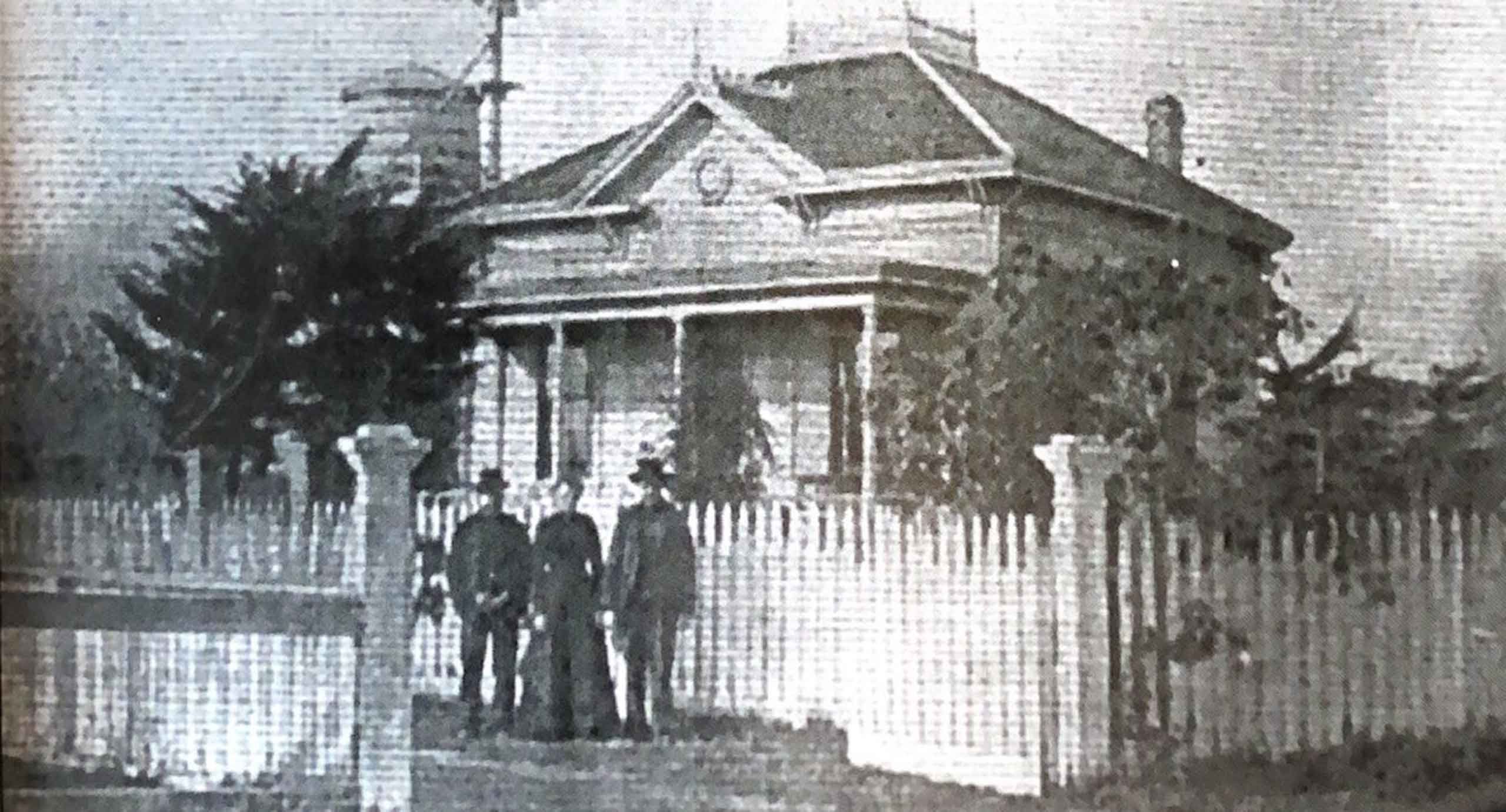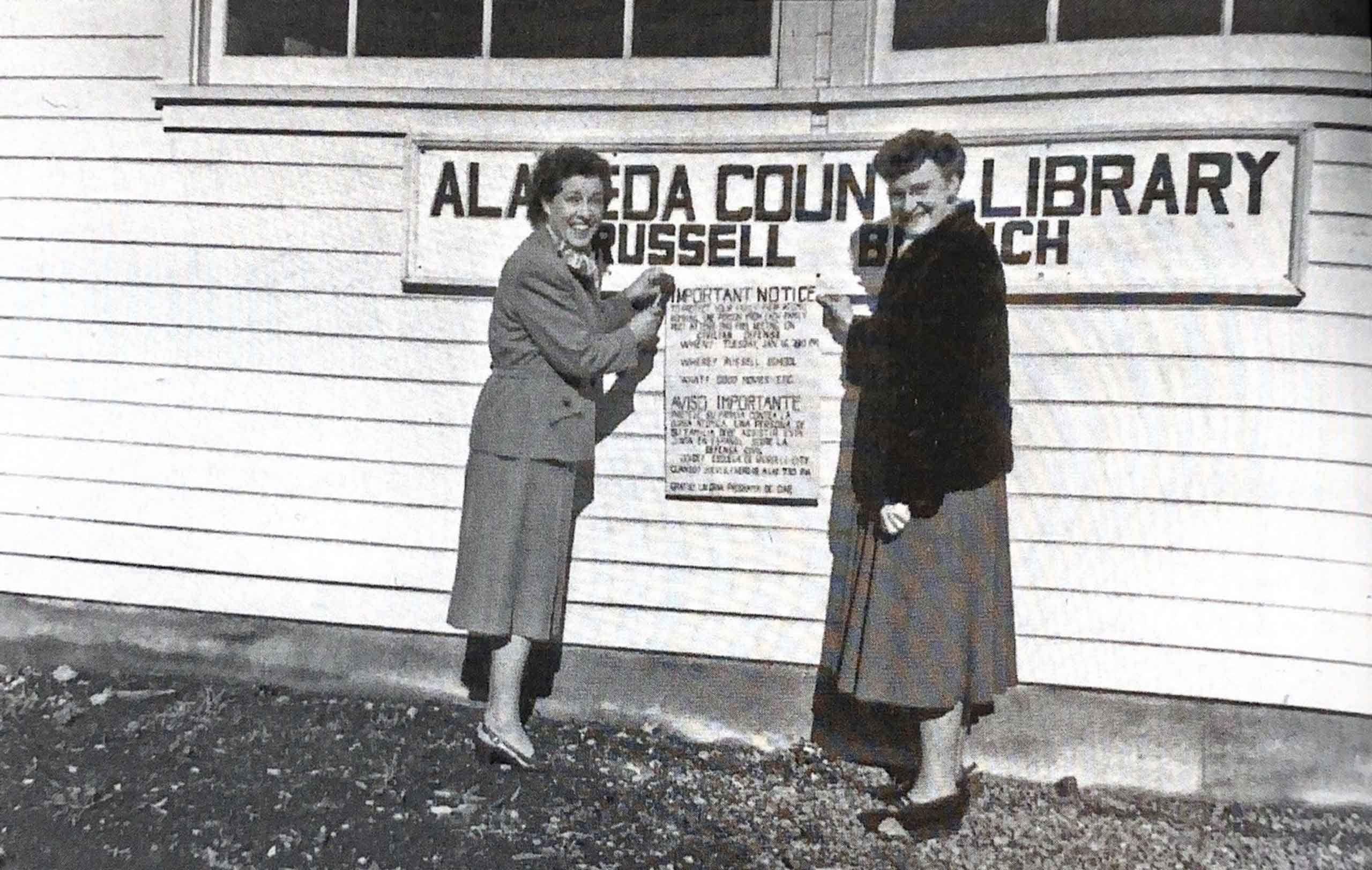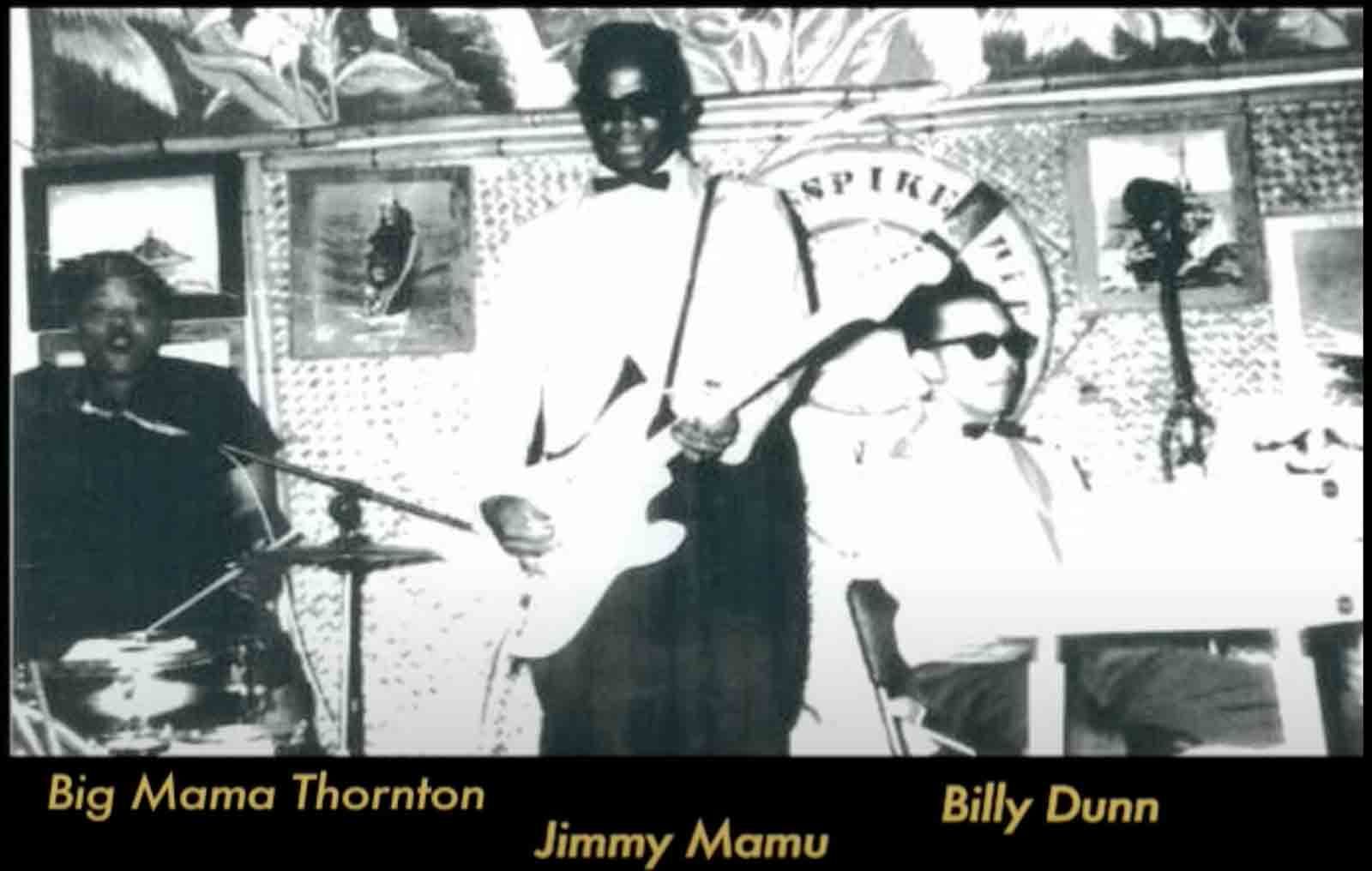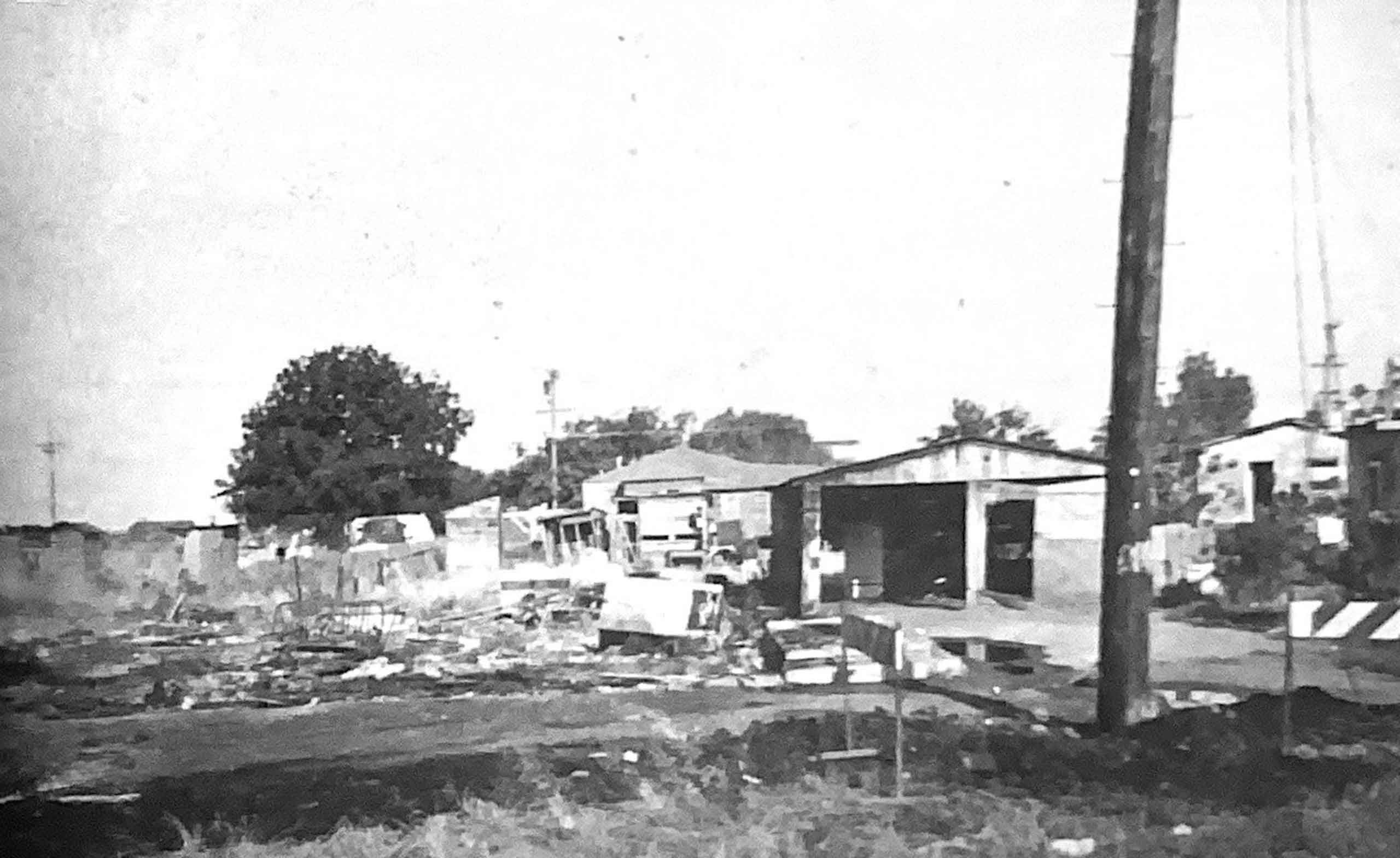
Initial Settlers of Russell City
The lands that comprised Russell City were once a part of the Rancho San Lorenzo land grant, owned by the Soto family. During the gold rush period, New Englander Joel Russell migrated to California. From 1853 to 1856, the future founder of Russell City squatted on the Soto’s land. At the end of the three years, the Soto’s agreed to sell him a portion of the rancho. In the following decades, Joel Russell focused on political and real estate ventures. He did sell small parcels of his land to German, Swiss, and Danish immigrants over the decades. The community was later referred to as Little Cophengean. After Joel died in 1888, the predominantly undeveloped land was divided into narrow-gridded plots and sold. Mr. Russell’s sons hoped to develop the land into a bustling city; however, it wasn’t until the mid-20th century that the town’s population significantly increased.
Initial Settlers of Russell City
The lands that comprised Russell City were once a part of the Rancho San Lorenzo land grant, owned by the Soto family. During the gold rush period, New Englander Joel Russell migrated to California. From 1853 to 1856, the future founder of Russell City squatted on the Soto’s land. At the end of the three years, the Soto’s agreed to sell him a portion of the rancho. In the following decades, Joel Russell focused on political and real estate ventures. He did sell small parcels of his land to German, Swiss, and Danish immigrants over the decades. The community was later referred to as Little Cophengean. After Joel died in 1888, the predominantly undeveloped land was divided into narrow-gridded plots and sold. Mr. Russell’s sons hoped to develop the land into a bustling city; however, it wasn’t until the mid-20th century that the town’s population significantly increased.

New Beginnings
Late 19th and early 20th century migration to Russell City was influenced by the city’s proximity to agricultural, cannery, and salt production employment opportunities. During the mid-20th century, industrial manufacturing, shipyard, and wartime employment in the surrounding region renewed interest in the city. “(As of 1942) Many of the present occupants of the ‘city’ did not move into it until after the depression. They came from the large cities nearby, from agricultural areas within the state, from Porto Rico, from Hawaii, from the Philippines, and from the Dust Bowl.” (Russell City Survey 1942).
Employment rates for Russell City residents fluctuated over the decades due to economic shifts locally and nationwide. During periods of unemployment, individuals turned to social programs to survive. For residents with an entrepreneurial spirit, Russell City offered the opportunity to establish various businesses, including automotive, carpentry, construction, dairy production, retail, livestock raising, and others.
New Beginnings
Late 19th and early 20th century migration to Russell City was influenced by the city’s proximity to agricultural, cannery, and salt production employment opportunities. During the mid-20th century, industrial manufacturing, shipyard, and wartime employment in the surrounding region renewed interest in the city. “(As of 1942) Many of the present occupants of the ‘city’ did not move into it until after the depression. They came from the large cities nearby, from agricultural areas within the state, from Porto Rico, from Hawaii, from the Philippines, and from the Dust Bowl.” (Russell City Survey 1942).
Employment rates for Russell City residents fluctuated over the decades due to economic shifts locally and nationwide. During periods of unemployment, individuals turned to social programs to survive. For residents with an entrepreneurial spirit, Russell City offered the opportunity to establish various businesses, including automotive, carpentry, construction, dairy production, retail, livestock raising, and others.

From far and Wide
From far and Wide

A Community Formed and a City Thrived
A Community Formed and a City Thrived

Setting Down Roots
Setting Down Roots

Blues Mecca
Blues Mecca

Lack of Support and Growing Hostilities
Although the unincorporated city and diverse community thrived, life in rural Russell City was challenging. Utilities, such as garbage, water, and sewer services including storm drains, were non-existent in the city’s infrastructure and operations. The high water table, lack of sewers, and wastewater processing facilities resulted in the periodic contamination of well water, which was their only drinking source. Occasional dysentery and other illnesses occurred as the population increased. In the fall of 1949, Alameda County notified Russell City residents that they had rejected a proposed plan that involved Hayward and Alameda County jointly sharing the cost of building water utilities for Russell City. The Alameda County Board of Supervisors argued that the county had no legal authority to finance the construction and maintenance of water pipes, even though Hayward offered to construct a partial line and sell Hetch-Hetchy water to Russell City. Residents fought for water access, petitioned for county assistance, gained the support of local organizations, and contacted California government officials; however, Alameda County’s stance remained unchanged.
Beyond utilities, the dirt roads were treacherous during the rainy season. The high water table and natural water drainage out to the bay made roads into muddy sloughs. Only three of the roads were paved, which was made possible by the tenacity and grit of residents who proved to the county that the need for paved roads was great. The county’s initial argument stated that due to the low property values and tax revenue, the potential revenue did not justify the costly construction. Russell City residents continuously fought against Alameda County and the public’s perception that Russell City was a slum and blight for the region. Over the decades, the growing animosity between the Alameda County and Russell City residents led to hostile interactions and the eventual razing of Russell City.
“We had horrid living conditions, but we had beautiful people who lived there, people who loved you and looked out for one another. We planted our own gardens, we picked our own food. We had chickens, we had hogs. You know, there was always the stench because, you know, from the hog ranches and animals just being everywhere…..” (Gloria Moore, prior resident of Russell City)
Lack of Support and Growing Hostilities
Although the unincorporated city and diverse community thrived, life in rural Russell City was challenging. Utilities, such as garbage, water, and sewer services including storm drains, were non-existent in the city’s infrastructure and operations. The high water table, lack of sewers, and wastewater processing facilities resulted in the periodic contamination of well water, which was their only drinking source. Occasional dysentery and other illnesses occurred as the population increased. In the fall of 1949, Alameda County notified Russell City residents that they had rejected a proposed plan that involved Hayward and Alameda County jointly sharing the cost of building water utilities for Russell City. The Alameda County Board of Supervisors argued that the county had no legal authority to finance the construction and maintenance of water pipes, even though Hayward offered to construct a partial line and sell Hetch-Hetchy water to Russell City. Residents fought for water access, petitioned for county assistance, gained the support of local organizations, and contacted California government officials; however, Alameda County’s stance remained unchanged.
Beyond utilities, the dirt roads were treacherous during the rainy season. The high water table and natural water drainage out to the bay made roads into muddy sloughs. Only three of the roads were paved, which was made possible by the tenacity and grit of residents who proved to the county that the need for paved roads was great. The county’s initial argument stated that due to the low property values and tax revenue, the potential revenue did not justify the costly construction. Russell City residents continuously fought against Alameda County and the public’s perception that Russell City was a slum and blight for the region. Over the decades, the growing animosity between the Alameda County and Russell City residents led to hostile interactions and the eventual razing of Russell City.
“We had horrid living conditions, but we had beautiful people who lived there, people who loved you and looked out for one another. We planted our own gardens, we picked our own food. We had chickens, we had hogs. You know, there was always the stench because, you know, from the hog ranches and animals just being everywhere…..” (Gloria Moore, prior resident of Russell City)

Eminent Domain & Destruction
In the mid-1950s, Alameda County Board of Supervisors desired to increase its industrial district. Lands were assessed for constructability and revenue potential. Considering the major regional developments including Hayward’s airport revitalization and the planned construction of the San Mateo Bridge, Russell City was deemed a desirable location. In the summer of 1956, Alameda County began formulating a plan to condemn Russell City, remove its residents, and construct an industrial park. Within this period, the Alameda County Board of Supervisors banned residential development, impeding revitalization efforts. To combat the county’s efforts and save their homes, Russell City residents requested rezoning the city to predominately residential use. Had the city been rezoned residential, residents would have been to apply for federal urban redevelopment funding, thereby enabling the city to build the critical infrastructure that it desperately needed. Detrimentally, the county denied the rezoning request. In fall of 1960, the county designated Hayward the Urban Renewal Agency for Russell City. A few years later, Russell City was annexed to Hayward and the removal process of its residents began. During this period, numerous arson fires broke out, engulfing vacant and occupied properties as the community fought their eviction. Initially, officials offered to purchase the land, however, the city ultimately used eminent domain to force residents out of Russell City. By 1967, the last remaining resident of Russell City had moved away. The razing of Russell City, forever changed the trajectory of its residents. Hardships were endured, businesses, homes, and land taken, and relationships lost.
Eminent Domain & Destruction
In the mid-1950s, Alameda County Board of Supervisors desired to increase its industrial district. Lands were assessed for constructability and revenue potential. Considering the major regional developments including Hayward’s airport revitalization and the planned construction of the San Mateo Bridge, Russell City was deemed a desirable location. In the summer of 1956, Alameda County began formulating a plan to condemn Russell City, remove its residents, and construct an industrial park. Within this period, the Alameda County Board of Supervisors banned residential development, impeding revitalization efforts. To combat the county’s efforts and save their homes, Russell City residents requested rezoning the city to predominately residential use. Had the city been rezoned residential, residents would have been to apply for federal urban redevelopment funding, thereby enabling the city to build the critical infrastructure that it desperately needed. Detrimentally, the county denied the rezoning request. In fall of 1960, the county designated Hayward the Urban Renewal Agency for Russell City. A few years later, Russell City was annexed to Hayward and the removal process of its residents began. During this period, numerous arson fires broke out, engulfing vacant and occupied properties as the community fought their eviction. Initially, officials offered to purchase the land, however, the city ultimately used eminent domain to force residents out of Russell City. By 1967, the last remaining resident of Russell City had moved away. The razing of Russell City, forever changed the trajectory of its residents. Hardships were endured, businesses, homes, and land taken, and relationships lost.
Legacy
Former residents and descendants remaining in the region gather annually to remember their beloved community and city. Many attend the West Coast Blues Hayward-Russell City festivals. From these gatherings, the rich story of Russell City has been compiled and shared, gaining the attention of the public and scholars alike. Documentaries and history books shed light on the lost city and the unjustly biased treatment of its residents. On November 17, 2021, City of Hayward council members formally apologized for the city’s “involvement in inequitable treatment and the forced relocation of Russell City Community members.” Per city officials, “The intent of the resolution is not to absolve but rather acknowledge the existence of institutional bias and racism and the historical role municipal government has played in its creation and legacy of inequality and racially disparate impacts.” Beyond the apology, Hayward has instituted the Russell City Reparative Justice Program. Hayward is developing the program and determining reparation measures in collaboration with prior residents and their descendants. To read more about the project, visit the Russell City Reparative Justice Project | City of Hayward – Official website (hayward-ca.gov)
Legacy
Former residents and descendants remaining in the region gather annually to remember their beloved community and city. Many attend the West Coast Blues Hayward-Russell City festivals. From these gatherings, the rich story of Russell City has been compiled and shared, gaining the attention of the public and scholars alike. Documentaries and history books shed light on the lost city and the unjustly biased treatment of its residents. On November 17, 2021, City of Hayward council members formally apologized for the city’s “involvement in inequitable treatment and the forced relocation of Russell City Community members.” Per city officials, “The intent of the resolution is not to absolve but rather acknowledge the existence of institutional bias and racism and the historical role municipal government has played in its creation and legacy of inequality and racially disparate impacts.” Beyond the apology, Hayward has instituted the Russell City Reparative Justice Program. Hayward is developing the program and determining reparation measures in collaboration with prior residents and their descendants. To read more about the project, visit the Russell City Reparative Justice Project | City of Hayward – Official website (hayward-ca.gov)
Conclusion
Russell City, like Hayward, developed from the pioneer spirit. Many were drawn to this east bay region by it’s rural beauty and mild climate in search of new opportunities and a place to call home. They formed relationships and communities and built towns that expanded with their needs. In particular, Russell City offered its residents an inclusive environment and culturally rich community. It supported it’s members, many of whom were low income and/or immigrants. Although the residents of Russell City experienced deplorable living conditions and negative public opinions, they loved the unincorporated city. Russell City was not just a place in which they lived but a home that was accepting and supportive of who they were and who they could be.
Conclusion
Russell City, like Hayward, developed from the pioneer spirit. Many were drawn to this east bay region by it’s rural beauty and mild climate in search of new opportunities and a place to call home. They formed relationships and communities and built towns that expanded with their needs. In particular, Russell City offered its residents an inclusive environment and culturally rich community. It supported it’s members, many of whom were low income and/or immigrants. Although the residents of Russell City experienced deplorable living conditions and negative public opinions, they loved the unincorporated city. Russell City was not just a place in which they lived but a home that was accepting and supportive of who they were and who they could be.
Citations
1 Dierup, Anne W. and Bernie Firestone. Russell City Survey: Housing and Sanitation. Distributed by the State Department of Immigration and Housing. 1940. Los Angeles, California. Access from Hathi Trust at #5 – Russell City survey : housing and sanitation / Anne W. Dierup … – Full View | HathiTrust Digital Library.
3 Russell City Planning Consultants. Russell City : A Proposed General Plan . C.P.211 Group Project, Fall 1953. Department of City and Regional Planning, UC. https://babel.hathitrust.org/cgi/pt?id=uc1.c077818582&seq=55
4 A LESSON IN COMMUNITY EFFORT. HAYWARD REVIEW, APR. 04, 1947 A Lesson in Community Effort | City of Hayward – Official website (hayward-ca.gov)
5 CHAMBER MEETING HELD AT ASHLAND SCHOOL HAYWARD REVIEW, JUN. 13, 1945 Chamber Meeting Held at Ashland School | City of Hayward – Official website (hayward-ca.gov)
6 RUSSELL CITY DYSENTERY OUTBREAK UNDER CONTROL. Oakland Tribune, Jul. 17, 1949 Access Denied | City of Hayward – Official website (hayward-ca.gov)
7 RUSSELL CITY WATER NEED IS BACKED. DAILY REVIEW, SEPT. 09, 1949 Russell City Water Need is Backed | City of Hayward – Official website (hayward-ca.gov)
8 PETITION FOR RUSSELL WATER: 100 SIGN REQUEST FOR COUNTY AID. DAILY REVIEW, SEPT. 09, 1949 Petition for Russell Water: 100 Sign Request for County Aid | City of Hayward – Official website (hayward-ca.gov)
9 EDITORIAL: WORK OUT AN ANSWER. DAILY REVIEW, SEPT. 21, 1949 Editorial: Work Out an Answer | City of Hayward – Official website (hayward-ca.gov)
10 GROUP WANTS FACTS ABOUT RUSSELL CITY. DAILY REVIEW, JUL. 11, 1950 Group Wants Facts About Russell City | City of Hayward – Official website (hayward-ca.gov)
11 EDITORIAL: KIDS’ GAME DAILY REVIEW, AUG. 26, 1950 Editorial: Kids’ Game | City of Hayward – Official website (hayward-ca.gov)
12 EDITORIAL: BARTELL’S ANSWER. DAILY REVIEW, SEPT. 01, 1950 Editorial: Bartell’s Answer | City of Hayward – Official website (hayward-ca.gov)
13 EXPERTS TO TOUR SITES FOR FUTURE INDUSTRIES Oakland Tribune, Jan. 17, 1957.
14 DUAL ACTION PROPOSED ON RUSSELL CITY. Oakland Tribune, Nov. 24, 1960.
15 COUNTY TO SEEK FEDERAL AID FOR RENEWAL OF RUSSELL CITY. OAKLAND TRIBUNE, MAR. 15, 1961. County to Seek Federal Aid for Renewal of Russell City | City of Hayward – Official website (hayward-ca.gov)
16 FEW TEARS SHED IN DOOMED RUSSELL CITY. Oakland Tribune, Oct. 08, 1961. https://www.hayward-ca.gov/discover/hayward-history/russell-city/documents/few-tears-shed-doomed-russell-city-oakland-tribune-oct-08-1961
17 HEARING ON RUSSELL CITY SET. Oakland Tribune, Feb. 26, 1963. https://www.hayward-ca.gov/discover/hayward-history/russell-city/documents/hearing-russell-city-set-oakland-tribune-feb-26-1963
18 IT’S NOT RIGHT TO MOVE PEOPLE. Oakland Tribune, May 22, 1963. https://www.hayward-ca.gov/discover/hayward-history/russell-city/documents/its-not-right-move-people-oakland-tribune-may-22-1963.
19 COULD RUSSELL CITY HAVE BEEN SAVED? Oakland Tribune, May 24, 1963. https://www.hayward-ca.gov/discover/hayward-history/russell-city/documents/could-russell-city-have-been-saved-oakland-tribune-may-24-1963
20 ADIEU, RUSSELL CITY. Letter to the editor from Rosie Eastland, Hayward. Oakland Tribune, Jun. 20, 1963. https://www.hayward-ca.gov/discover/hayward-history/russell-city/documents/adieu-russell-city-oakland-tribune-jun-20-1963
21 LANDMARK DESTROYED IN BLAZE. Oakland Tribune, May 25, 1964. https://www.hayward-ca.gov/discover/hayward-history/russell-city/documents/landmark-destroyed-blaze-oakland-tribune-may-25-1964.
22 ARSONISTS IN RUSSELL CITY HIT TWICE. Oakland Tribune, Sept. 21, 1964. https://www.hayward-ca.gov/discover/hayward-history/russell-city/documents/arsonists-russell-city-hit-twice-oakland-tribune-sept-21-1964
23 RUSSELL CITY FIRE RAZES 17 BUILDINGS. Daily Review, Sept. 02, 1965. https://www.hayward-ca.gov/discover/hayward-history/russell-city/documents/russell-city-fire-razes-17-buildings-daily-review-sept-02-1965
24 LAST FAMILY SEES HOME BURN DOWN. Oakland Tribune, Jan. 17, 1967. https://www.hayward-ca.gov/discover/hayward-history/russell-city/documents/last-family-sees-home-burn-down-oakland-tribune-jan-17-1967
25 Hayward Historic Society. Hayward Area Historical Society (haywardareahistory.org)
















































